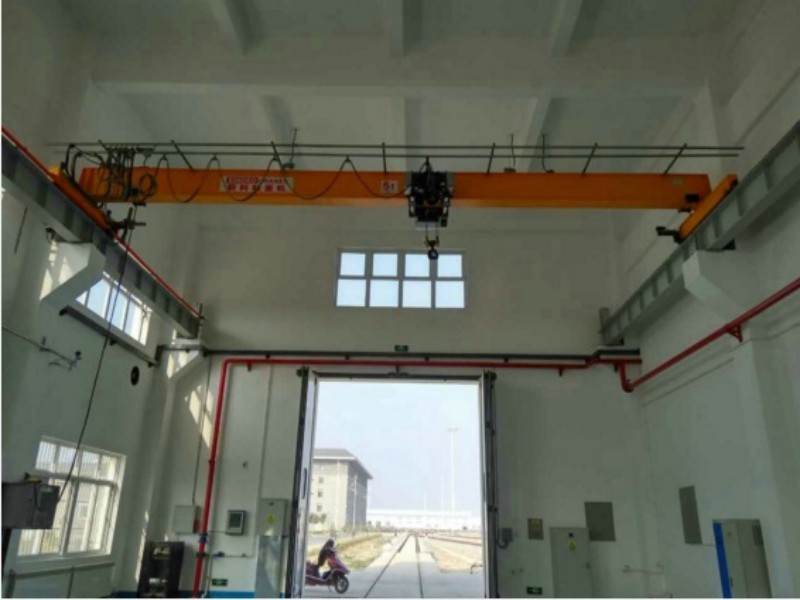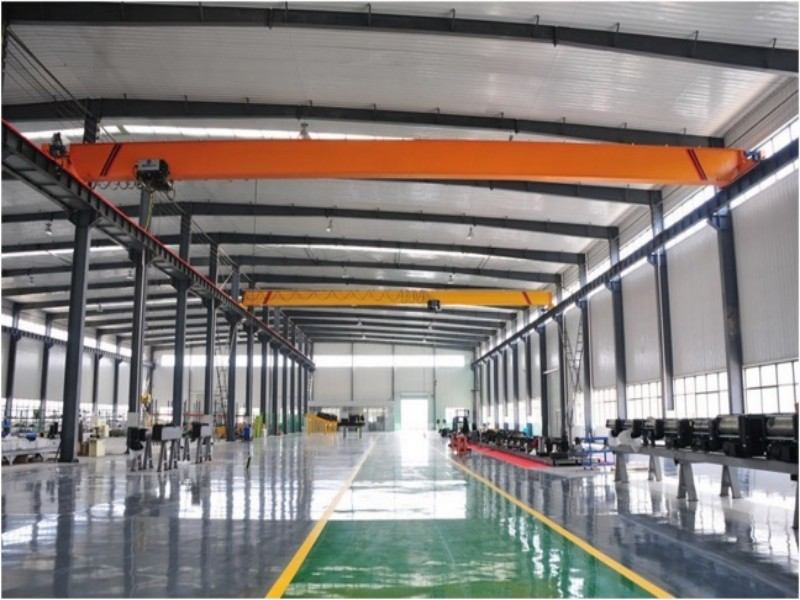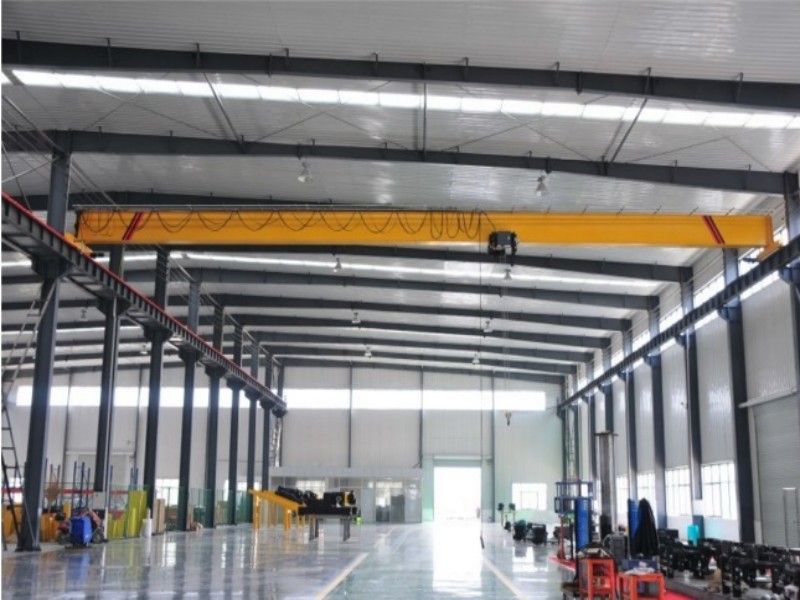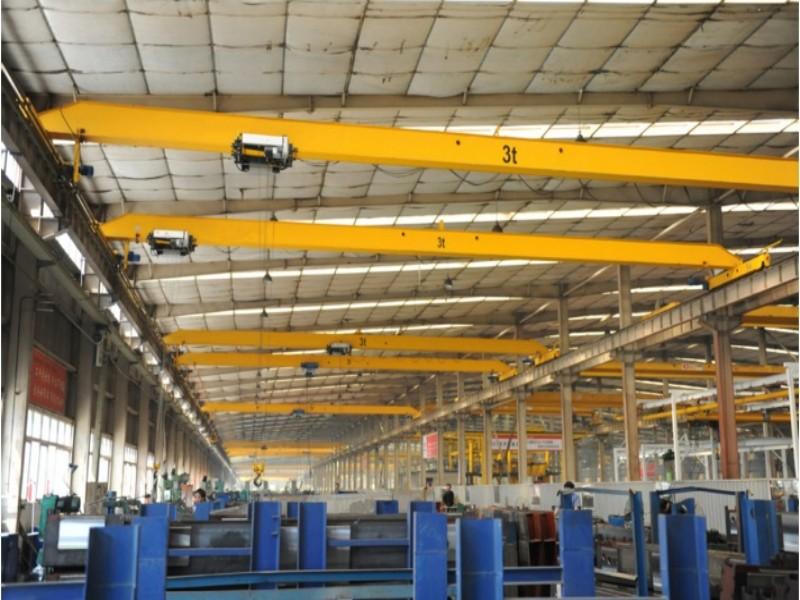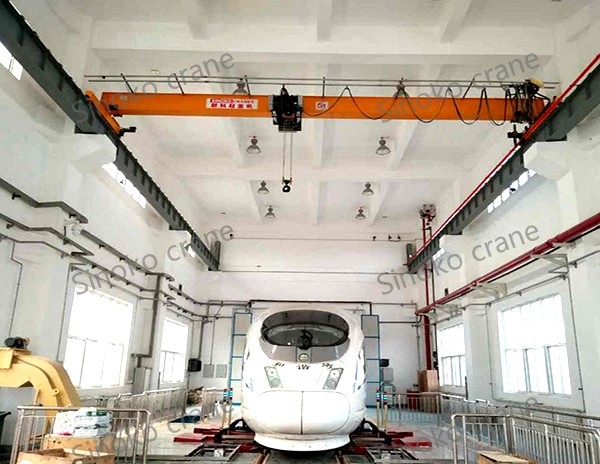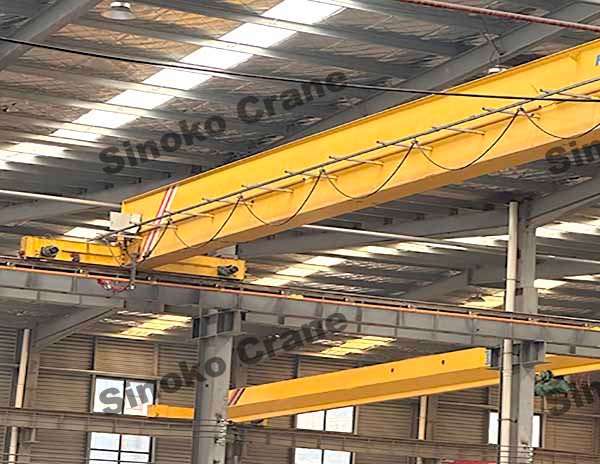1. Hoist - The hoist mechanism is a unit consisting of a motor drive, coupling, brakes, gearing, drum, ropes, and load block designed to raise, hold and lower the maximum rated load. Hoist mechanism is mounted to the trolley.
2. Trolley - The unit carrying the hoisting mechanism which travels on the bridge rails in a direction at right angles to the crane runway. Trolley frame is the basic structure of the trolley on which are mounted the hoisting and traversing mechanisms.
3. Bumper (Buffer) - An energy absorbing device for reducing impact when a moving crane or trolley reaches the end of its permitted travel, or when two moving cranes or trolleys come into contact. This device may be attached to the bridge, trolley or runway stop.
4. Runway Rail - The rail supported by the runway beams on which the crane travels.
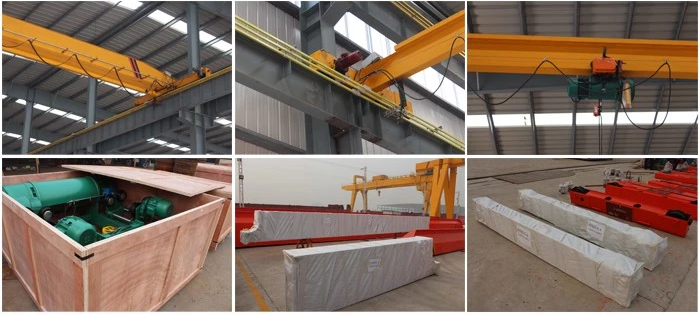
Features
One of the most important advantages is increased safety as it allows the operator to stay away from the load while controlling the crane. The crane operator is able to move around to get a better view of the load and surroundings, and to make sure the path is clear.
Remote control will free the operator from the constraints of hanging control cables or cabins.
The overhead crane is easy to operate and has low operating cost.
Overhead cranes with remote controls improve working conditions and are ideal for high-risk applications.
Remote Control Single Girder Overhead Crane Specification
| Type | Double Girder Crane |
| Span | up to 35 m |
| Lifting speed | 5/0.38 m/min or customized |
| Traveling speed | 0~40 m/min |
| Cross Speed | 0~100 M/Min (VVVF) |
| Working Class | M3-M6 |
| Specification | CE, ISO |
Remote Control Double Girder Overhead Crane Specification
| Capacity | 1~20 tons |
| Lift height | Max. 90 m |
| Span | 7.5~40m |
| Work duty | M3~M6 |
| Protection class | IP54/IP55 |
| Working temperature | -20~+60℃ |
CASE
Explore how our Remote Control Overhead Cranes have been implemented in a variety of projects. From enhancing safety in hazardous environments to improving operational efficiency in industrial facilities, see how our advanced crane solutions can be tailored to meet your unique lifting needs.
Installation of QZ-Type Grab Bucket Bridge Crane Project Case
The Sinoko QZ-Type Grab Bucket Bridge Crane was specially designed for a Brazilian client as a grab bucket crane, which significantly improved the client's work efficiency and received unanimous praise from the client.
Learn More Get a QuoteAutomotive Repair Facility in Russia 5 Ton Workshop Bridge Crane Project Case
The Sinoko crane, a 5-ton bridge crane tailor-made for a Russian customer's auto repair shop, has helped the customer solve the problem of lifting and transportation, improved the customer's work efficiency, and saved the customer's work costs.
Learn More Get a Quote3× 5T European-Style Single-Girder Cranes for Kenyan Sugar Refinery
Sinoko cranes has designed three 5-ton bridge cranes for Kenyan customers, which have solved their problems. Come and contact Sinoko cranes to solve your lifting problems.
Learn More Get a QuoteFAQs
A Remote Control Overhead Crane allows operators to control the crane's movements from a distance using wireless or radio controls. This enhances safety and operational efficiency, especially in hazardous or hard-to-reach environments.
The crane is equipped with a radio or wireless remote control system that communicates with the crane’s lifting mechanism, allowing the operator to maneuver the load from a safe distance while maintaining precise control over lifting and lowering actions.
This crane improves safety by reducing the operator's exposure to potential hazards and provides greater flexibility in controlling load movements. It also helps increase operational efficiency by allowing simultaneous operations and reducing downtime.
Yes, our Remote Control Overhead Cranes are designed to operate in both indoor and outdoor environments. They are built to withstand tough conditions, including extreme temperatures and weather, ensuring reliable performance at construction sites, warehouses, and more.
Yes, Sinoko Cranes offers a range of customization options for the Remote Control Overhead Crane, including varying lifting capacities, control systems, hoist types, and crane sizes to meet your specific operational requirements.
The crane comes with advanced safety features such as overload protection, emergency stop functions, safety limit switches, and anti-collision systems. These ensure secure operation, reduce risks, and promote a safe working environment.













